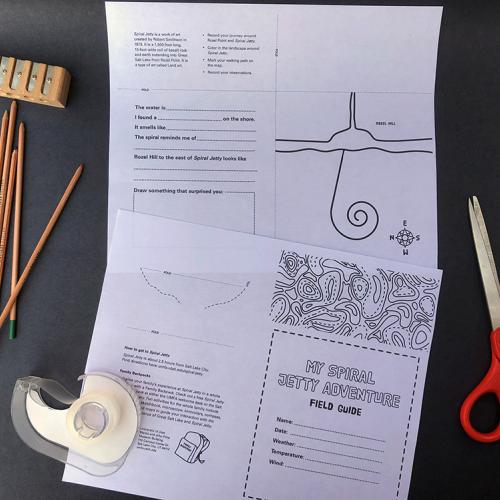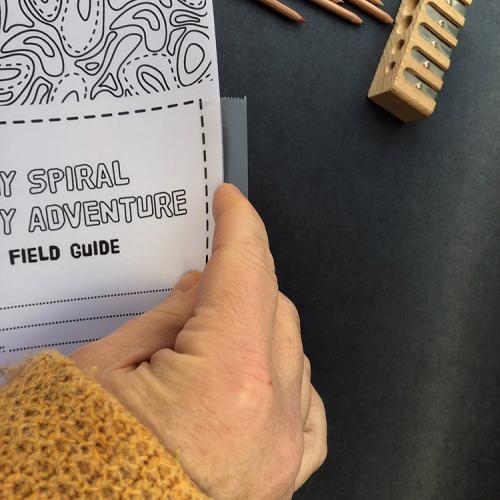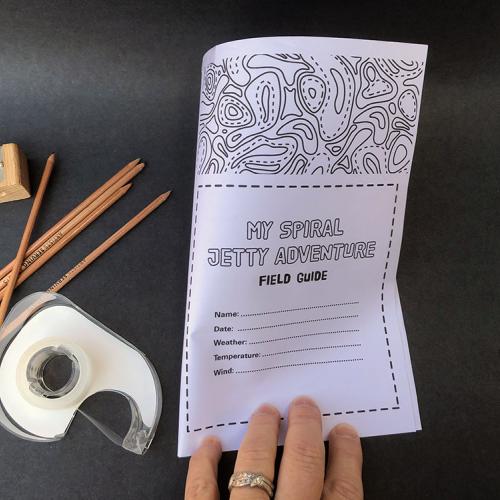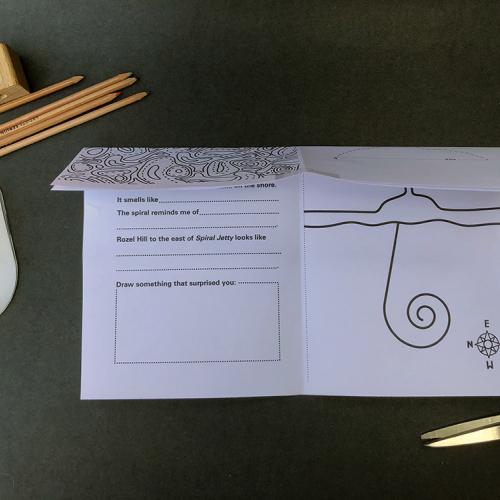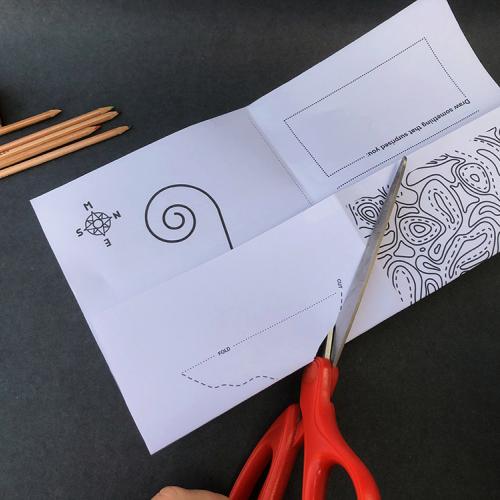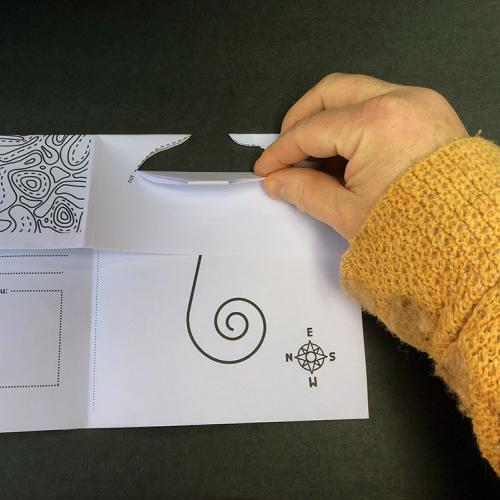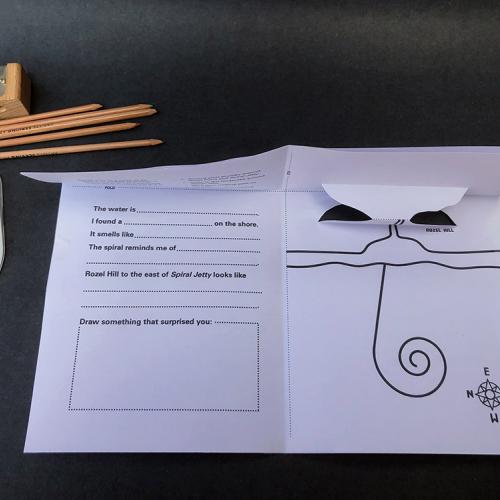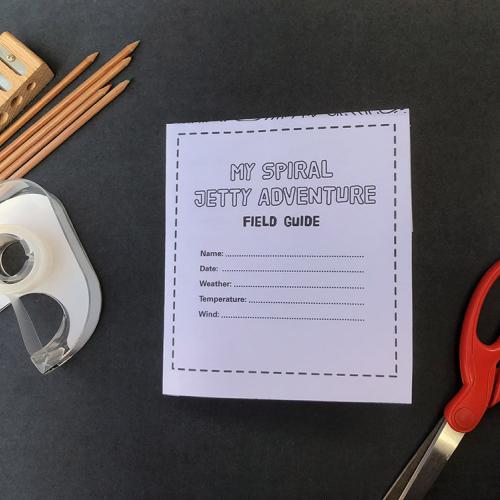Third Saturday: Spiral Jetty Field Guide | April 2020
While the UMFA is temporarily closed, we're bringing our popular Third Saturday for Families art-making activity to you.
Happy Birthday, Spiral Jetty!
April 2020 marks the fiftieth anniversary of Robert Smithson's Spiral Jetty—the iconic work of Land art located in the north arm of Great Salt Lake! The UMFA is celebrating by helping you make your own field guide for the artwork. The UMFA has lots of art in its collection to help you understand and be inspired by this fascinating artwork. First, look at these two very different art objects, both of which have a connection to Spiral Jetty.
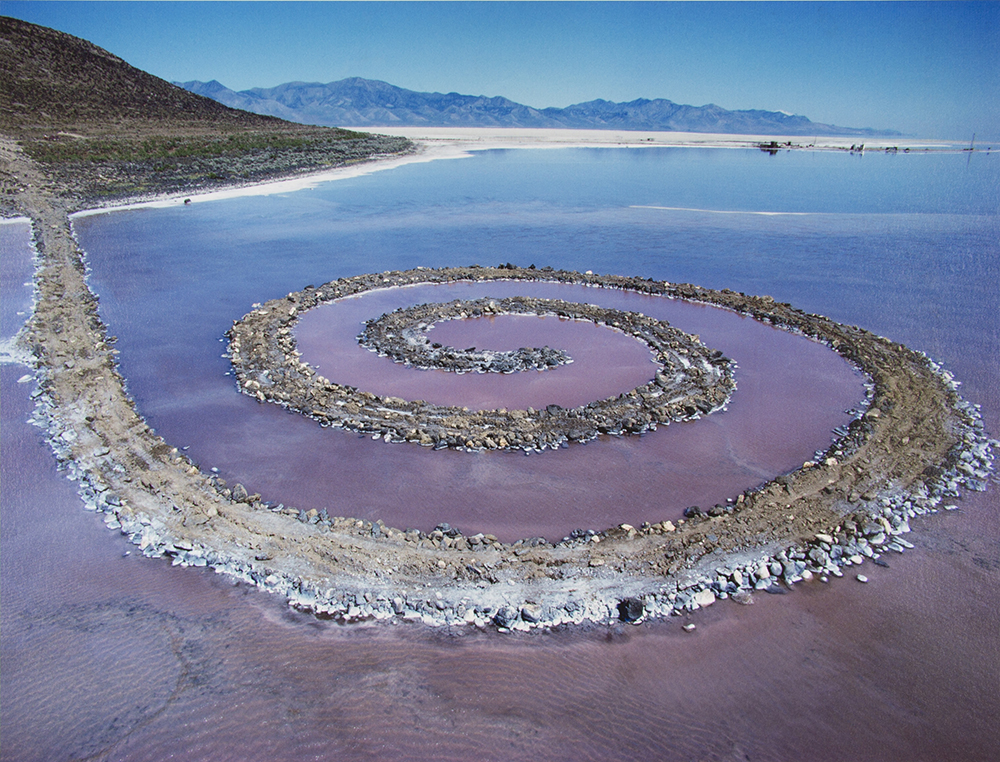
This is one of Gianfranco Gorgoni’s photographs of Spiral Jetty, taken in 1970, after Smithson asked Gorgoni to document the work's construction. Gorgoni continued to photograph Spiral Jetty for the next twenty years, creating a record of the earthwork's changes over time. Look closely at this photograph. How does Spiral Jetty look different? What do you think made the changes?
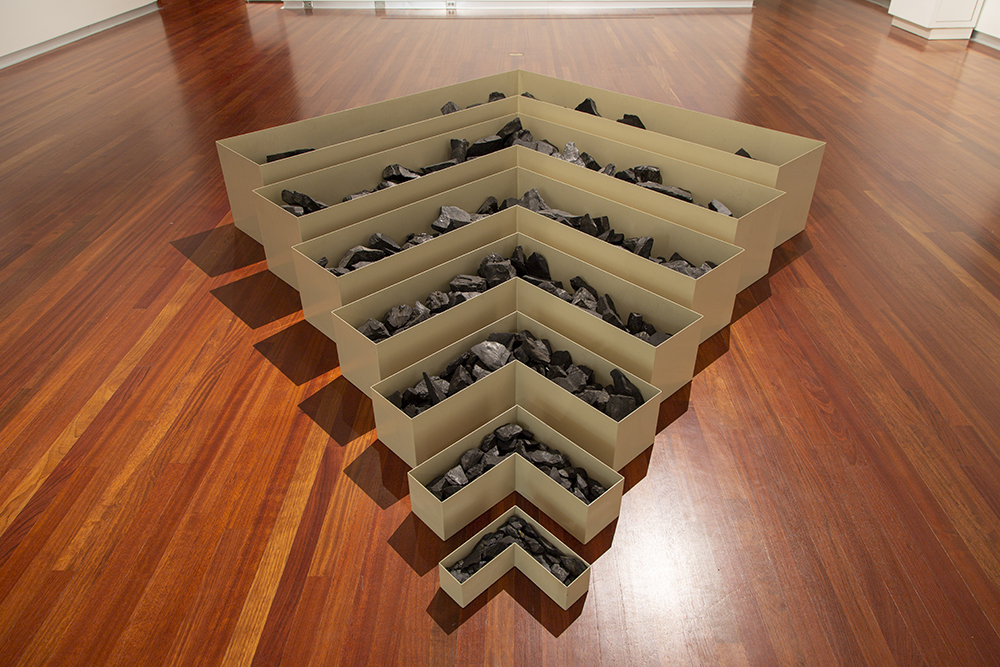
This sculpture by Robert Smithson is called Nonsite, Site Uncertain (1968), and it's on loan to the UMFA from the Detroit Institute of Arts. Smithson made a number of what he called "nonsite" works, in which he took rocks or other natural materials from their original “site” and placed them in a museum setting—a “nonsite.” How is this nonsite different from Spiral Jetty, which is artwork that exists in its original site in the landscape? How is it similar?
Consider these questions as an art adventurer! Print our field guide template to make your own pop-up book that brings your story to life.
You can make your own record of a past trip to Spiral Jetty. Or, if you have not been, you can imagine what you might observe using our Spiral Jetty resources.
Follow along using the instructive video and photos with step-by-step instructions:
1. Print the field guide. You can print on regular paper but if you have any heavy paper the guide will be stronger.
2. Be sure to print two-sided. If you can’t do that, you can print two pages and tape them back to back.
3. Fold the guide in half along the vertical fold line down the center of the guide.
4. Open it up again and fold the top down on the fold line that is 1/3 of the way down from the top.
5. Cut the mountain lines at the top of the guide, then fold the mountain down on the fold lines.
6. When you unfold the top flap you can pop the mountain to the inside creating a three-dimensional mountain for the map on your field guide.
7. Fold down the top flap with the mountain inside and close your guide. Now you are ready to fill it out.
8. Try recording some things on the map of Spiral Jetty like your path, plants, animals, or the weather.
Take your sense of adventure with you anywhere and everywhere! Explore your own neighborhood using our downloadable walking tour that helps you notice color in nature.

Third Saturdays are funded by Salt Lake County Zoo, Arts & Parks (ZAP).

